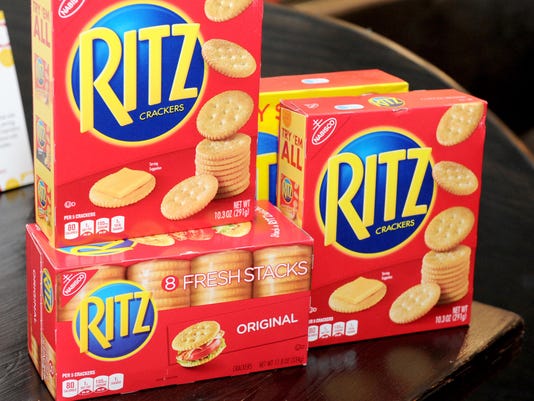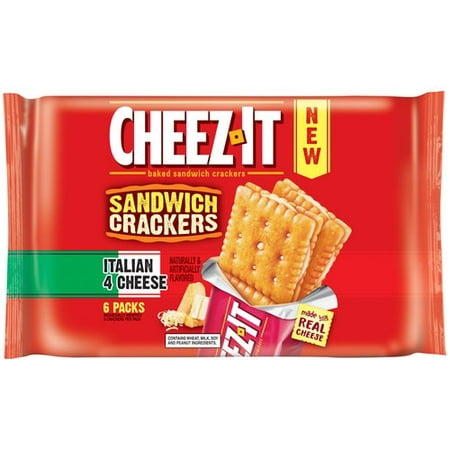Cheez It Expiration Date
Apr 18, 2011 - The key is to understand that the expiration date is presented in. Cheez-Its, Famous Amos cookies, Nutrigrain cereal bars, Pop Tarts, and a. Sorry sweetie, no food has an actual expiration date on it except baby formula and baby food. What you are seeing is a best if used by date. If those cheez it taste good they are good.
Cheez It Expiration Code is getting popular at Tv.com. Find the Best Guide for Cheez It Expiration Code and More.
Kellogg’s includes manufacture codes on products to show customers the date by which they should consume them. You can still eat Kellogg’s products after the printed date, but vitamin and mineral content usually decline past the product’s expiration. Kellogg’s uses different expiration codes for different products; they usually consist of a combination of numbers and letters. Learning how to read expiration codes on Kellogg's products will enable you to determine if your cereal is past its consumption date.
Locate the product code on the top flap of the cereal box.
Read the first three letters or two numbers to determine the product's expiration month. For example, a product that expires in February will start with 'FEB' or '02.'
Interpret the two numbers following the first three letters or first two numbers as the product’s expiration day. The '01' in a product with the code 'FEB 01 2010 AOJ' or '020110AB' represents the first day of the month--in this case, February.
Read the last two or four numbers following the expiration day as the expiration year. The '2010' in a product with an expiration code 'FEB 01 2010 AOJ' represents year 2010, as does '10' in a product with an expiration code '020110AB.'
Tip
Any letters and numbers following the expiration year indicate Kellogg's manufacturing locations.
It's a question millions of us try to answer every day: How long is food safe to eat after its sell-by date has passed?
On 'The Early Show on Saturday Morning,' dietitian Tanya Zuckerbrot, author of 'The F-Factor Diet,' shared some advice for this dietary dilemma and what the dates stamped on food products really mean.
Zuckerbrot explained the three most common dates are Sell-By Date, Use-By Date, and Expiration Date. But what do they mean?

Sell-By Date: Refers to the last day a retailer can display a product for sale; typically a food is safe to eat for 10 days after the Sell-by Date if refrigerated properly.
Use-By Date: Refers to the last day a product will maintain its optimum freshness, flavor, and texture. Beyond this date, the product begins to deteriorate although it is still edible.

Expiration Date: Means what it says - if you haven't used a product by this date, toss it.
Zuckerbrot pointed out a surprising fact: with the exception of baby food and infant formula, dating is not required by U.S. federal law.
So how do you know what is good and what is not safe to eat?
Zuckerbrot shared how these food products are labeled and how long it's safe to eat them:
Poultry and Meat
Meat and poultry typically have a Sell-By date. You should use or freeze your chicken within one to two days of purchasing and meat within three to five days of purchasing. Freezing your poultry and meat can make these proteins last anywhere from nine to 12 months. When freezing, it is important to make sure your poultry and meat is tightly wrapped in order to prevent it from freezer burn. Freezer burn does not make food dangerous to eat, but does damage the texture and taste.
Dairy and Eggs
Dairy and eggs typically have a Sell-By Date
Proper refrigeration (40° F or below) is vital to ensure the best possible shelf life of your dairy.
According to the Dairy Council of California, the shelf life of milk is affected by several factors, including how it is handled before and after it is purchased. When stored at 40 degrees Fahrenheit and not left out of the refrigerator for extended time periods, milk should last approximately five to seven days past the 'sell by' date.'
The type of cheese contributes to its shelf life. Soft cheese (cream cheese) will last up to two weeks, whereas a medium or hard cheese (cheddar) can last three to six months.
The Egg Safety Center reports that the dates on egg cartons are not food expiration dates, but guidelines. Raw eggs can stay good for approximately three to five weeks after the date of purchase as long as they are not cracked or damaged.
Baked Goods and Snack Foods
Baked goods and snacks typically have a Use-By Date.
Store-bought bread will typically last five to seven days at room temperature, but can last one to two weeks in the refrigerator. Fresh-baked bread do not contain preservatives, so they typically won't keep as long as commercially packaged breads.
If the date on your bread or snacks has expired, it does not mean they have not gone bad. In fact, once something something goes stale it means that it has been depleted of moisture, which makes it less likely to grow mold. Try storing it in a plastic bag for extended shelf life.
Snack foods contain preservatives in order to maintain shelf life.
Different types of snacks have varying expiration dates: Potato chips will last one month after expiration date. Crackers and pretzels can last up to three months. One of the longest lasting snacks is popcorn, which has a shelf life of one to two years.
There is a myth that Twinkies can last upward of 50 years. However, this is urban legend. Twinkies can last for a lengthy 25 days without packaging, because dairy products are not a part of the recipe. After 25 days, a Twinkie does not spoil, but loses some of its taste and flavor.
Canned Goods
Canned goods typically have an Expiration Date.
Low-acid canned foods such as vegetables like peas or carrots can last anywhere from two to five years. High acid canned foods such as citrus fruits, pickles, or tomatoes can last 12 to 18 months.
Make sure to store your cans in the dark, because light can accelerate natural chemical reactions.
If your can is bulging or has a dent, throw it out, as this may be a sign of food-borne illness.
Beverages
Beverages typically have Use-By dates.

Many water bottles have a two-year Use-By date printed on them. However, as long as the bottle stays unopened it is safe to drink. Bottled water does not contain nutrients, so the pathogens that cause food-borne illness can't grow. Once a bottle of water has been opened it should not be kept for more than two weeks.
Soda has a storage time of three months, after that the color and flavor might change but the beverage will be safe for consumption.
So how can I tell if a food item has spoiled if no date is posted?
Trust your nose and eyes. If it looks or smells funny, throw it out. If you see mold, it's too old. Many people cut off the moldy piece of fruit or bread and believe it is then safe to eat. However, molds are filamentous (threadlike) and when a food shows mold growth on the surface it means that the root like threads have invaded the entire food. Mold can cause allergic reactions, respiratory problems, and the mycotoxins they produce can make you sick.